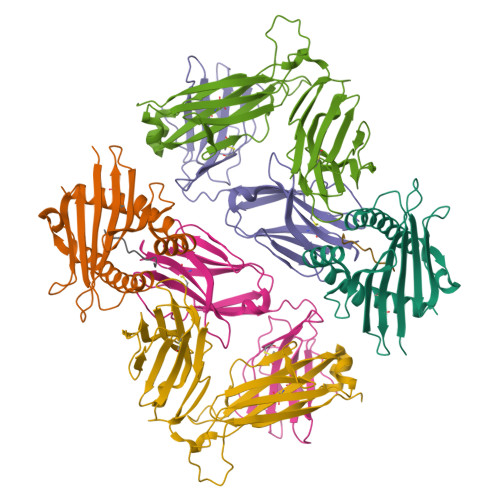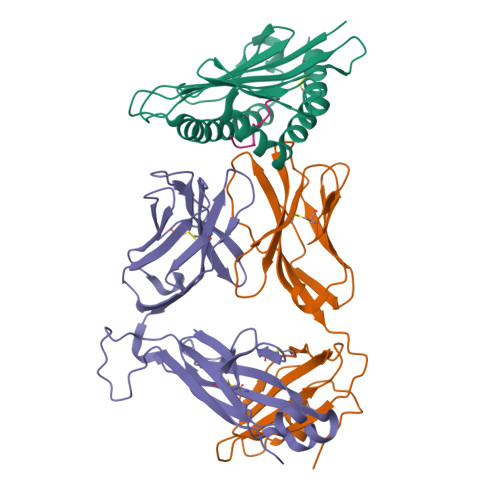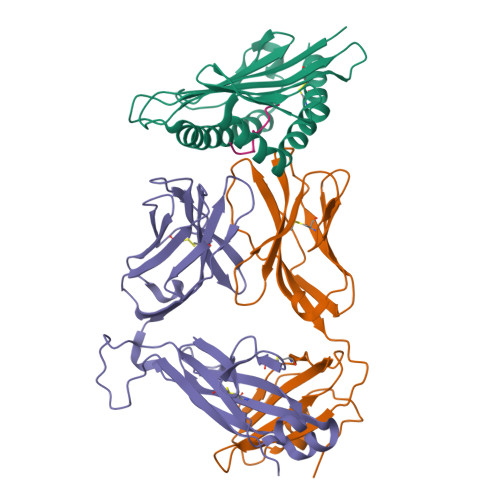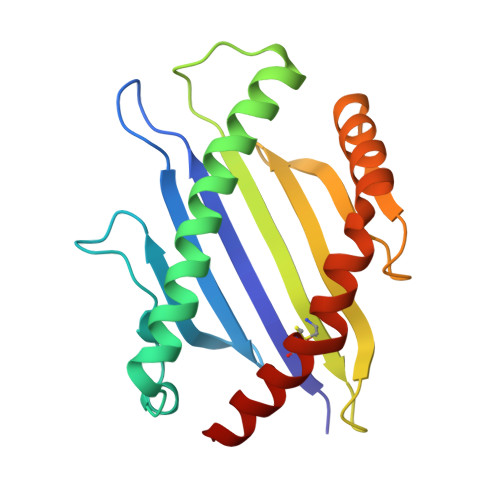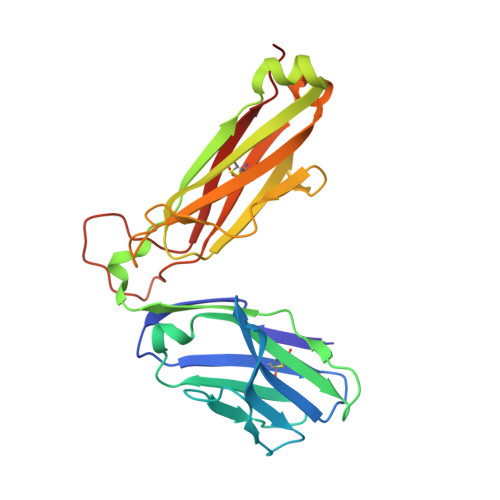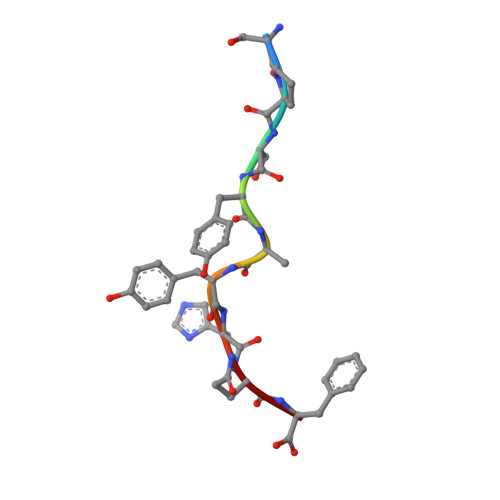Structures suggest an approach for converting weak self-peptide tumor antigens into superagonists for CD8 T cells in cancer.
Wei, P., Jordan, K.R., Buhrman, J.D., Lei, J., Deng, H., Marrack, P., Dai, S., Kappler, J.W., Slansky, J.E., Yin, L.(2021) Proc Natl Acad Sci U S A 118
- PubMed: 34074778
- DOI: https://doi.org/10.1073/pnas.2100588118
- Primary Citation of Related Structures:
6L9K, 6L9L, 6L9M, 6L9N - PubMed Abstract:
Tumors frequently express unmutated self-tumor-associated antigens (self-TAAs). However, trial results using self-TAAs as vaccine targets against cancer are mixed, often attributed to deletion of T cells with high-affinity receptors (TCRs) for self-TAAs during T cell development. Mutating these weak self-TAAs to produce higher affinity, effective vaccines is challenging, since the mutations may not benefit all members of the broad self-TAA-specific T cell repertoire. We previously identified a common weak murine self-TAA that we converted to a highly effective antitumor vaccine by a single amino acid substitution. In this case the modified and natural self-TAAs still raised very similar sets of CD8 T cells. Our structural studies herein show that the modification of the self-TAA resulted in a subtle change in the major histocompatibility complex I-TAA structure. This amino acid substitution allowed a dramatic conformational change in the peptide during subsequent TCR engagement, creating a large increase in TCR affinity and accounting for the efficacy of the modified self-TAA as a vaccine. These results show that carefully selected, well-characterized modifications to a poorly immunogenic self-TAA can rescue the immune response of the large repertoire of weakly responding natural self-TAA-specific CD8 T cells, driving them to proliferate and differentiate into functional effectors. Subsequently, the unmodified self-TAA on the tumor cells, while unable to drive this response, is nevertheless a sufficient target for the CD8 cytotoxic effectors. Our results suggest a pathway for more efficiently identifying variants of common self-TAAs, which could be useful in vaccine development, complementing other current nonantigen-specific immunotherapies.
Organizational Affiliation:
Key Laboratory of Virology, Hubei Key Laboratory of Cell Homeostasis, College of Life Sciences, Wuhan University, 430072 Wuhan, China.








